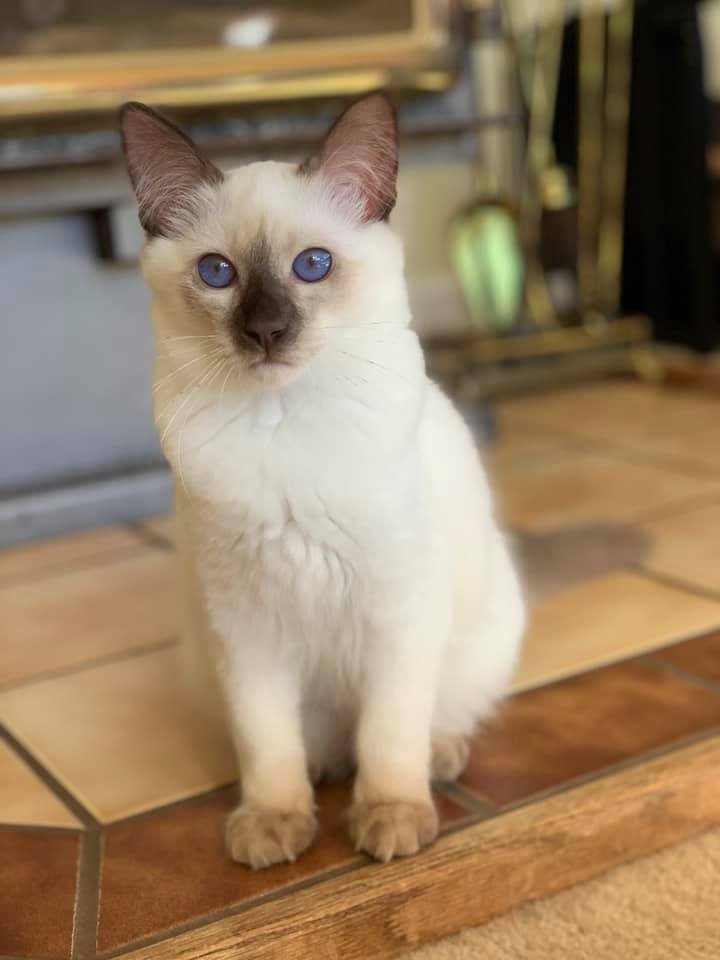Balinese cats are often marketed as hypoallergenic, a term that suggests reduced allergic reactions rather than complete immunity. For individuals sensitive to cat allergens, this claim can be both hopeful and misleading. To understand whether Balinese cats genuinely offer relief to allergy sufferers, it’s essential to examine the science behind feline allergens, breed specific protein expression, and the environmental factors that influence allergic responses.
The primary allergen responsible for cat related reactions is Fel d 1, a protein produced in feline saliva, skin, and sebaceous glands. When cats groom themselves, this protein transfers to their fur and dander, eventually becoming airborne. Contrary to popular belief, fur length or shedding frequency plays a minimal role in allergen production. What matters more is the concentration of Fel d 1 and how it disperses in the home environment. Studies have shown that all cats produce Fel d 1, but levels can vary significantly between individuals and breeds.
Balinese cats, despite their long coats, have been observed to produce lower levels of Fel d 1 compared to many other breeds. This trait is not fully understood but may be linked to their genetic proximity to the Siamese, which also exhibits reduced allergen output in some cases. However, the variation is not consistent across all Balinese cats, and no breed is entirely free of allergens. What makes the Balinese noteworthy is the combination of lower Fel d 1 expression and behavioral patterns that may reduce allergen spread. Their meticulous grooming habits and preference for human interaction often result in cleaner fur and less environmental shedding, which can contribute to a more tolerable experience for sensitive individuals.
Environmental management plays a critical role in mitigating allergic reactions. Regular grooming, air filtration, and surface cleaning can significantly reduce allergen load, regardless of breed. Balinese cats tend to enjoy grooming sessions, which makes it easier for owners to maintain hygiene without stress. Their social nature also means they are more likely to tolerate bathing, a practice that can temporarily reduce surface allergens. In homes with allergy sufferers, combining breed selection with proactive cleaning strategies offers the best chance of minimizing symptoms.
Pet owners should consider regional factors when evaluating hypoallergenic claims. Humidity, ventilation, and home size all influence allergen concentration. In densely populated urban areas, where space is limited and airflow may be restricted, allergen buildup can occur more rapidly. Balinese cats, with their lower Fel d 1 output and cooperative temperament, may offer a more manageable solution in such environments. In contrast, rural homes with better ventilation may allow for greater flexibility in breed choice, though the Balinese still stands out for its combination of elegance and allergen sensitivity.
Scientific research continues to explore genetic markers that influence Fel d 1 production, and some breeders are working toward selectively breeding cats with reduced allergen profiles. While the Balinese is not a guaranteed solution for all allergy sufferers, it represents one of the more promising options available today. Owners should approach the hypoallergenic label with informed caution, recognizing that individual reactions vary and that no cat is truly allergen free.
Choosing a Balinese cat for an allergy conscious household is not just about minimizing sneezing or watery eyes, it’s about finding a companion whose biology and behavior align with the needs of sensitive individuals. Their affectionate nature, lower allergen potential, and adaptability make them a thoughtful choice for those seeking both beauty and comfort in a feline friend. With proper care and realistic expectations, the Balinese cat can offer a harmonious balance between companionship and allergy management.
Other Cats

